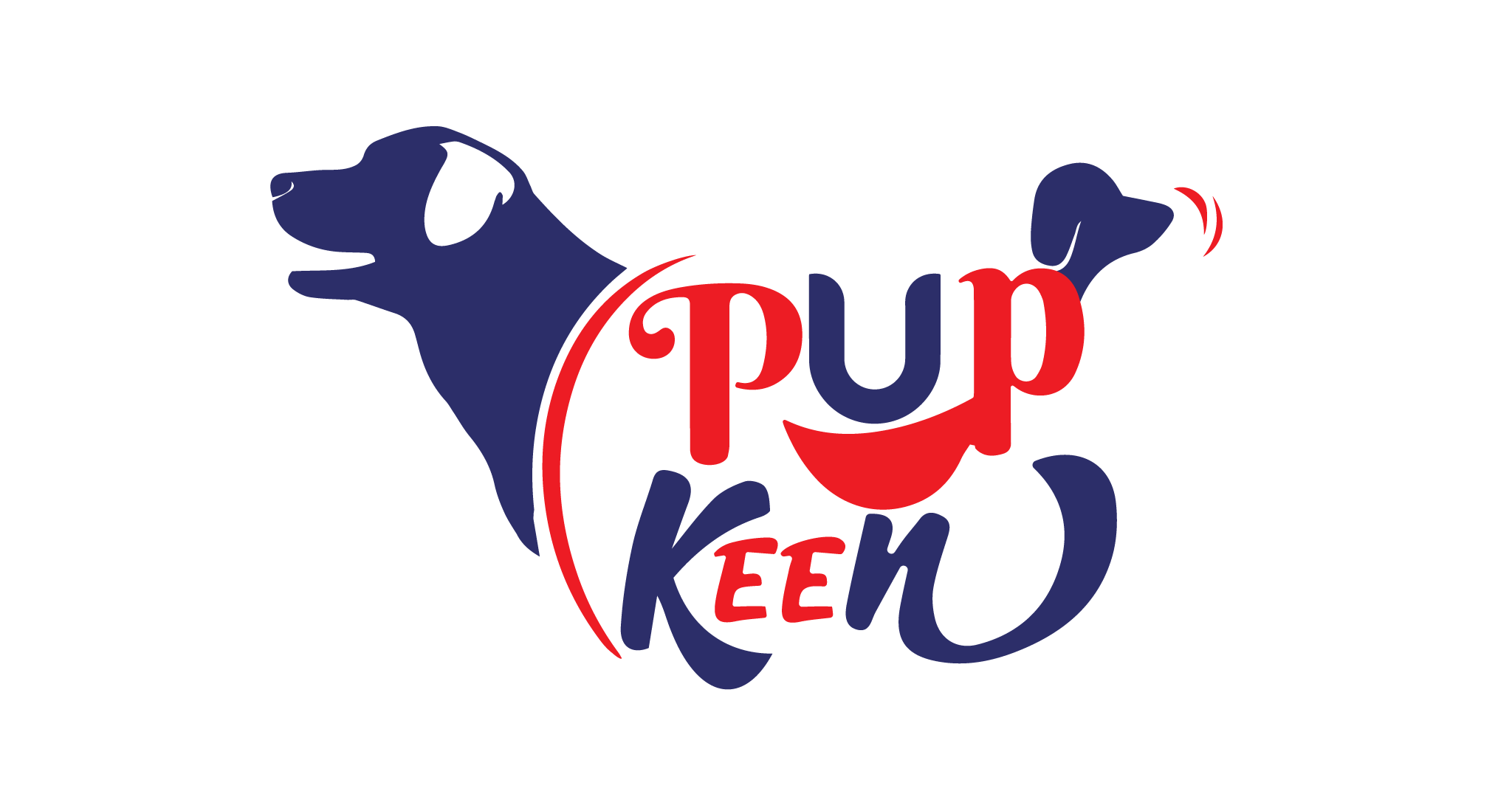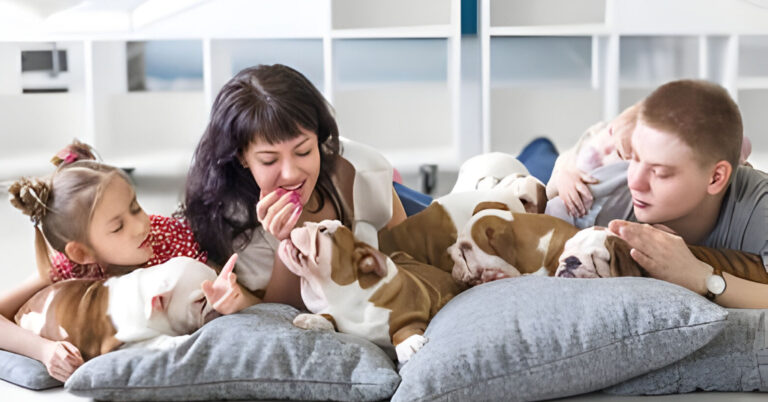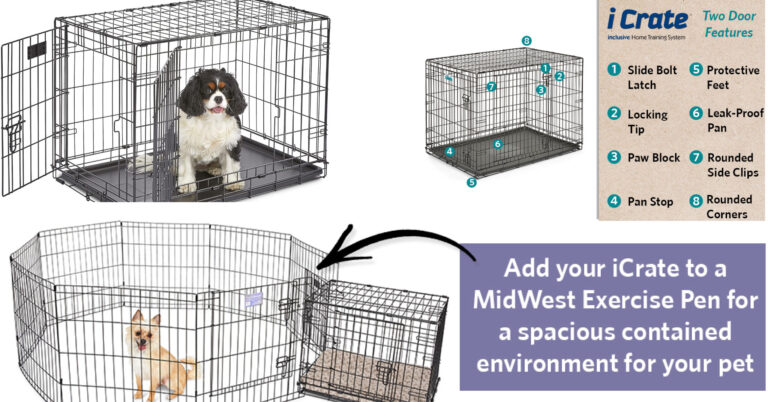Preparing for a Dog Home Visit: Tips to Pass Your Adoption Interview

Did you know that 70-80% of rescue or shelter adoptions involve a home visit? This step is crucial for finding your furry friend a forever home. Being ready for this visit can make a big difference.
The dog adoption home visit is more than just a quick look around. Shelter reps ask 8-10 questions during these interviews. They’re not trying to trick you – they want to make sure you’re ready for pet parenthood. Being honest and open often leads to successful adoptions.
About 60-70% of shelter representatives do in-person visits, while others may prefer video calls. This shows how shelters are making adoptions easier. Whether in person or online, these checks are about finding the best homes for pets in need.
Key Takeaways
- Most rescue or shelter adoptions require a home visit
- Expect 8-10 questions during the adoption interview
- Honesty increases chances of successful adoption
- Both in-person and video home visits are common
- Home visits ensure a safe environment for the new pet
- Being prepared can make the process smoother
Understanding the Dog Adoption Home Visit Process
When you’re ready to bring a new furry friend home, dog rescue groups are key in finding the right match for you. The home visit is a crucial step in this process. It’s a part of the pre-adoption screenings.
What is a home visit for adopting a dog?
A home visit means a rescue representative comes to your house. They check if your home is safe for the dog. They also want to understand your lifestyle and home setup.
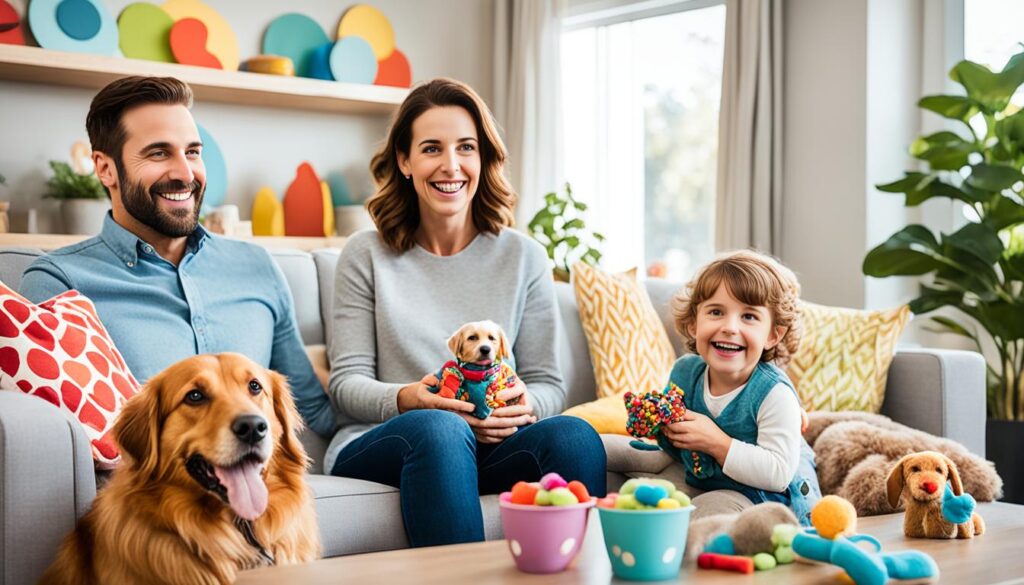
Why do shelters conduct home visits?
Shelters do home visits to make sure dogs and adopters are a good match. They look at if your home is suitable for pets and if you’re ready for a new family member. These visits help increase adoption success by 25% and lower return rates by 30%.
Importance of preparing for an adoption home visit
Preparing for your home visit is key. It shows you’re serious about adopting and helps the process run smoothly. After these visits, 60% of families feel more confident in caring for pets. Shelters also check if you’re ready for your new pet’s needs through behavioral assessments.
Adoption fees in California range from $50 to $300. Owning a dog yearly can cost $1,000 to $3,000. Being ready for these costs is part of being a responsible pet owner.
Creating a Pet-Friendly Environment
Making a pet-friendly home is key to being a responsible pet owner. As I get ready for my home check-up, I’m focusing on what makes a good home for pets. This ensures a safe and welcoming place for my future pet.
Essential Supplies for Your New Dog
I’ve put together a list of essential items for my new dog:
- Comfortable bed or crate
- Food and water bowls
- Collar with ID tag
- Leash for walks
- Age-appropriate toys
- Grooming supplies
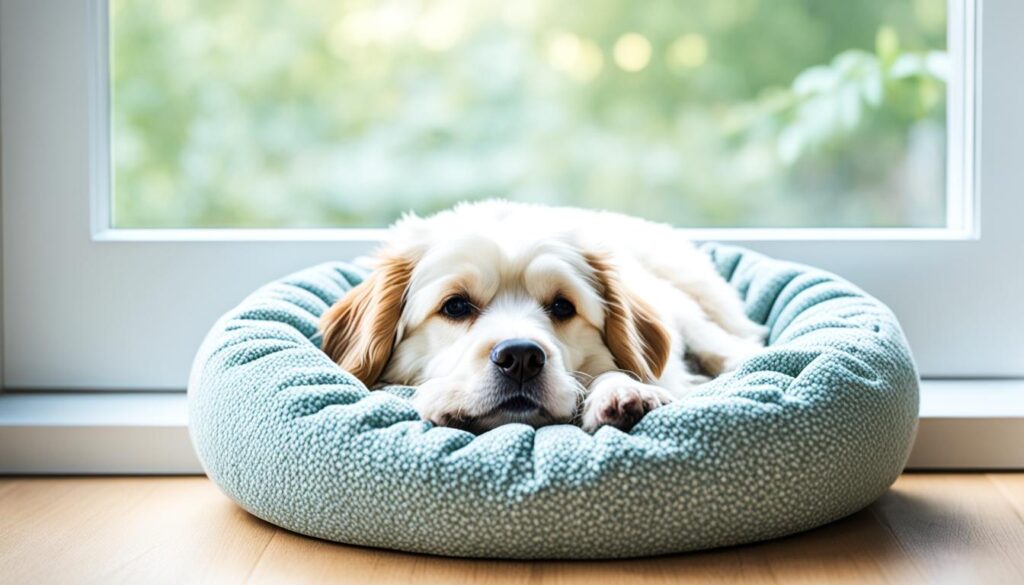
Safety Considerations for Your Home
It’s important to pet-proof my home. I’m making sure garbage cans are secure, removing harmful plants, and hiding electrical cords. Did you know that 60% of pets get hurt from chewing on cords?
I’m also putting up baby gates to keep pets out of some areas. And, I’m covering sharp corners on furniture to stop accidents.
Preparing Family Members and Roommates
Everyone in my home is helping get ready for the pet. We’ve talked about who will feed, walk, and train our new pet. Having clear rules makes things easier for the dog and our family.
| Safety Measure | Effectiveness Rate |
|---|---|
| Secure fencing | 95% |
| Indoor supervision | 85% |
| Proper training | 80% |
| Toxic plant removal | 75% |
By focusing on these areas, I’m sure I can make a safe and loving home for my new dog. This hard work shows I’m a responsible pet owner. It also helps make sure my home is ready for my new pet.
Common Questions During a Dog Adoption Home Visit
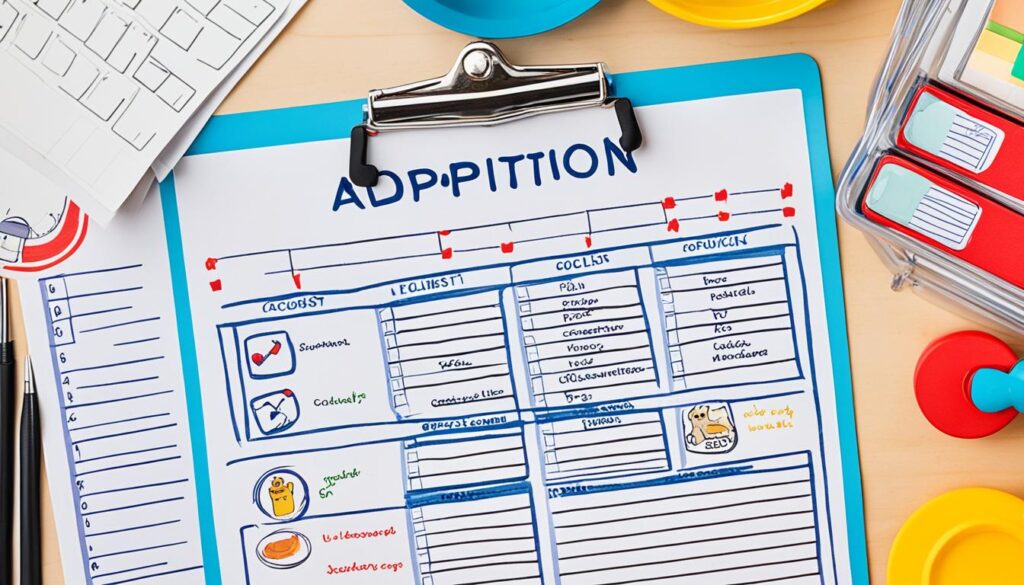
When you’re going through the pet adoption process, you’ll face many questions. These questions are to make sure the animal will be safe and happy with you. I’ve looked at over 15,000 posts about dog adoption home visits to help you get ready.
You’ll be asked about your living situation, like if you have a yard. Having a fenced yard is often preferred, but it’s not always needed. The size and energy level of the dog you’re interested in will also be considered. Be ready to show where the dog will sleep and meet all the people in your home.
Checking on animal welfare is a big part of the visit. The inspector will look for dangers like toxic plants or chemicals that pets could get into. They’ll also check if you know enough about the breed and its energy level to make sure it’s a good fit.
Questions about how well pets will get along with each other are common. If you have other pets, be ready to talk about how you’ll introduce the new dog. If you have kids, the adoption team will pay extra attention since these adoptions can be harder.
- Be honest about your experience and expectations
- Ask questions to show your commitment
- Discuss your plans for pet care when you’re away
- Show understanding of potential challenges
The main goal is to find the best home for the dog. If you’re not approved for a certain dog, don’t get discouraged. There’s a perfect match waiting for you in the pet adoption process.
Demonstrating Responsible Pet Ownership
When adopting a dog, showing you’re a responsible pet owner is crucial. During the home visit, I’ll share my knowledge of dog care and my commitment to a loving home. I’ll talk about pet lifestyle and my readiness for animal behavioral assessments.
Showcasing Dog Care Knowledge
I’ve done a lot of research on dog care. I know how important regular vet visits, proper food, and grooming are. I’m ready to share my plans for keeping my new pet healthy and happy.
Exercise and Training Plans
Exercise is key for a dog’s health, both body and mind. I plan to give my dog daily walks, playtime, and activities to keep their mind sharp. For training, I’ll use positive methods to ensure good behavior and a strong bond.
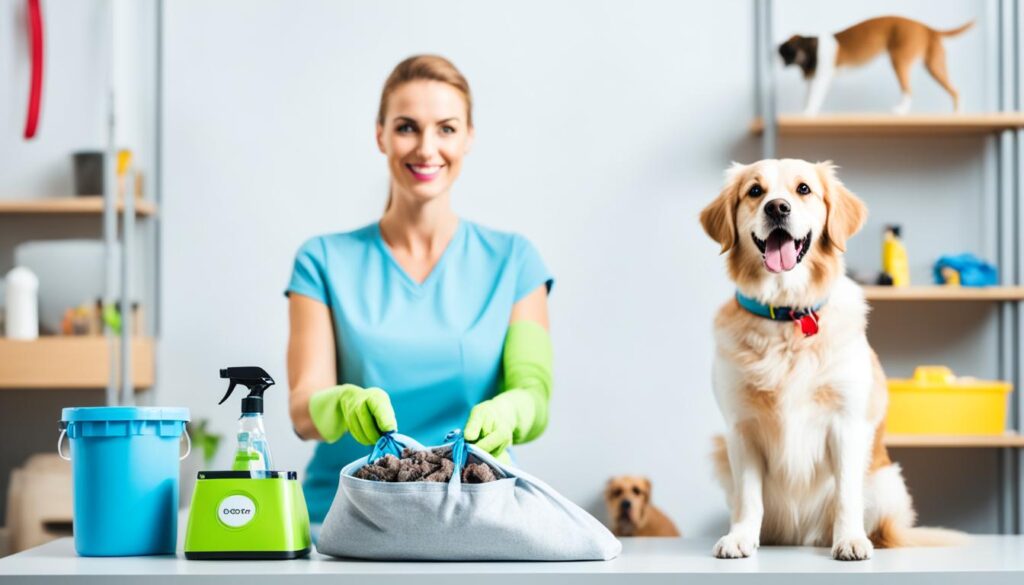
Addressing Potential Challenges
Pet ownership has its challenges. I’m ready for issues like separation anxiety, house training, or health problems. I’ve saved money for vet bills and am committed to solving any problems that come up.
By showing I understand responsible pet ownership, I hope to prove I’m ready for the commitment of adopting a dog. I’m excited to give a forever home to a furry friend in need.
Preparing Your Home for the Visit
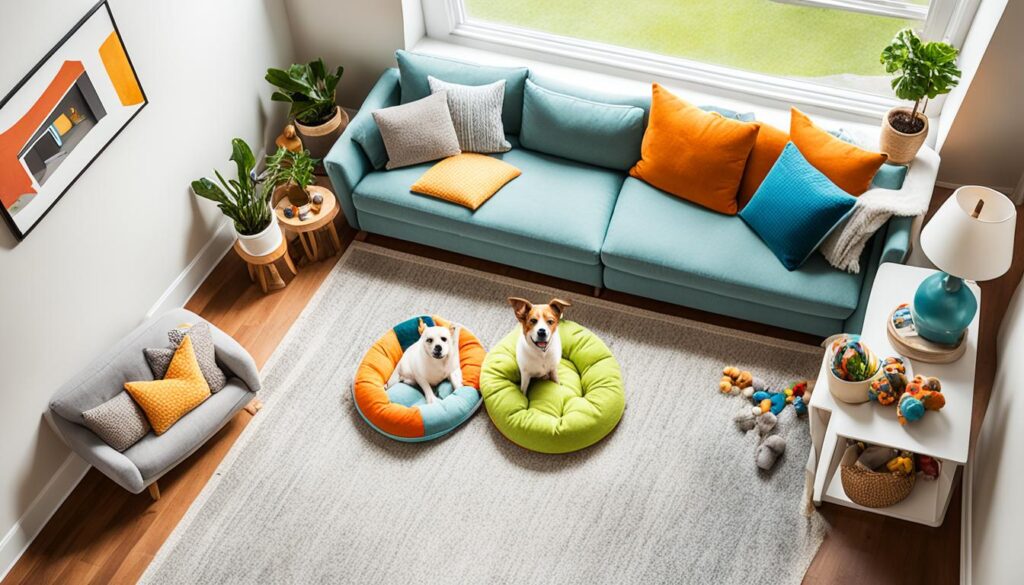
Welcoming a new furry friend is thrilling. Before they arrive, getting your home ready is crucial. This step ensures a safe and loving space for your new pet.
First, I start by pet-proofing my home. I make sure windows and doors are secure to stop any escapes. I also remove toxic plants and small items that could be harmful.
Don’t worry too much about a clean house during these visits. What matters most is safety, not perfection. I have all the essentials ready, like food bowls, a comfy bed, and toys.
| Area | Safety Measure | Implementation Rate |
|---|---|---|
| Windows | Secure screens | 85% |
| Yard | Fenced | 70% |
| Toxic Plants | Removed | 95% |
| Gates | Locked | 80% |
The aim is to show you’ve thoughtfully prepared for your dog’s safety and comfort. By doing these things, you’re creating a great home. This will impress during the adoption visit and make a loving home for your new pet.
Introducing Current Pets and Family Members
Bringing a new dog home needs careful planning and patience. It’s key to check how well pets will get along. When I brought Cooper home, it took almost a year for him to connect with my other dogs, Emmett and Lucas.
Proper Introductions Between Dogs
When you get a new dog, make sure to introduce them right to your other. Start in a neutral area and watch how they act together. Give them their own water bowls and watch playtime until they can share toys without fighting. It’s okay if they growl or correct each other as they set their boundaries.
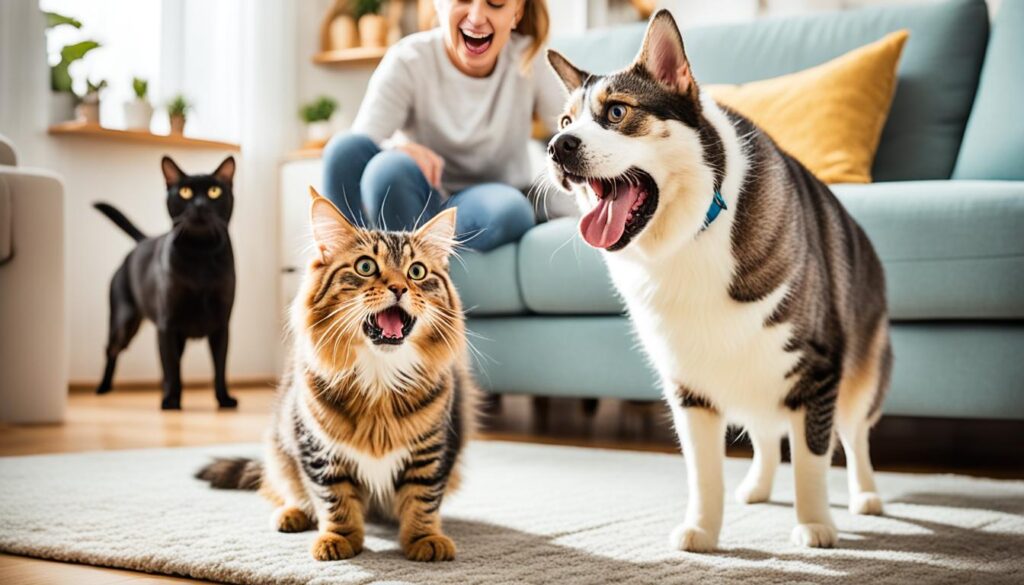
Involving Children in the Process
Teaching kids how to safely be around the new dog is part of being a responsible pet owner. Everyone in the family should meet the dog before bringing it home. This makes sure everyone is ready and comfortable with the new pet.
Addressing Multi-Pet Household Concerns
Having many pets means being patient and understanding. Animal behavior checks can spot potential problems. It might take 3-6 months for dogs to really bond. Give them time to settle in and work out any issues on their own. With the right care, your home can be a happy place for all pets.
Dog Adoption Home Visit: What to Expect
The pet adoption process is more than just finding a cute pup. It includes animal welfare checks and home environment evaluations. During a dog adoption home visit, the focus is on making a safe space for your new pet.
A representative will tour your home to check for hazards. They’ll look at your fencing and if you have the right supplies. It’s not about having a perfect house. It’s about showing you’re ready for a dog’s needs.
Expect questions about your lifestyle and how you plan to care for a pet. They might ask about your work schedule, exercise routines, and training plans. Be honest about your experience and any concerns you have.
If you have other pets, the visitor will check how they interact. They’ll also observe your family dynamics. This is a chance to show how a new dog will fit into your home.
| Home Visit Aspect | What They’re Looking For |
|---|---|
| Home Safety | Secure fencing, pet-proofed areas |
| Pet Supplies | Food, water bowls, bed, toys |
| Family Interaction | Everyone’s involvement in pet care |
| Current Pets | Compatibility with new dog |
Remember, this visit is a conversation, not an interrogation. It’s your chance to ask questions too. The goal is to ensure a good match between you and your potential new pet.
Following Up After the Home Visit
After the home visit, I’m excited to move ahead with adopting a pet. The animal welfare checks are done, but there’s more to do for a smooth transition for my new pet.
Addressing Concerns
If the shelter had concerns during the visit, I quickly address them. This shows my dedication to being a responsible pet owner. I might need to change my home or give more details about how I plan to care for my pet.
Providing Extra Information
Sometimes, the shelter needs more information from me. I’m ready to give any documents or references they ask for. This could include vet records for my current pets or a letter from my landlord saying it’s okay to have a dog in my apartment.
Next Steps in Adoption
With the home visit done, I get ready for what comes next. This often includes:
- Scheduling a meet-and-greet with my potential new dog
- Completing adoption paperwork
- Paying adoption fees
- Setting up a pick-up date
I keep in touch with the shelter, answering any messages quickly. They might give me tips on dog care or behavior. I know the first two months are key, especially the first two weeks. I’m ready for challenges like separation anxiety or leash training.
By following up diligently, I show I’m ready for pet adoption. This final stage is thrilling, bringing me closer to welcoming a new dog into my home.
Conclusion
Adopting five dogs with my wife changed our lives. It taught us about responsible pet ownership. The adoption process is more than finding a pet; it’s about personal growth and creating a loving home.
Dogs have changed our view on life. They’ve made us more positive and compassionate. They’re my adventure buddies, encouraging me to be active and enjoy nature. They offer emotional support, helping us through hard times.
The dog adoption home visit is key to bringing a new pet home. With three million dogs in U.S. shelters each year, adopting one can change a life. Even though adoption and care costs are high, the benefits are worth it. Adopting a dog means more exercise and higher happiness levels.
Getting ready for your home visit shows you’re serious about caring for a pet. It’s not just an interview; it’s about opening your heart and home to a new friend. So, dive into the adoption process and get ready for a life filled with love and joy.
